#Chapter 1 Geography Class 10
Explore tagged Tumblr posts
Text
Ch-01 Resources and Development - MCQs and Q&A Complete Guide
Prepare confidently for your Class 10 Geography exams with this complete guide on Chapter 01 – Resources and Development from the NCERT textbook Contemporary India II. This post includes a wide range of exam-ready MCQs, Very Short Answer (VSA), Short Answer (SA), and Long Answer (LA) questions with answers—all written in simple, student-friendly language. Whether you’re revising key points,…
#CBSE Class 10 Geography#Chapter 1 Geography Class 10#Chapter 1 Geography Summary#Class 10 Geography#Class 10 Geography Chapter 1 Explained#Class 10 Geography Chapter 1 Important Questions#Class 10 Geography Exam Preparation#Class 10 Geography Questions and Answers#Contemporary India II Chapter 1#Geography Chapter 1 MCQs#Geography Class 10 Chapter 1 PDF#Geography MCQs for Class 10 with Answers#Long Answer Questions Geography Class 10#NCERT Class 10 Geography#NCERT Solutions for Geography Class 10#Resources and Development Class 10#Resources and Development MCQs#Resources and Development Notes#Resources and Development Quick Revision#Short Answer Questions Geography Class 10#VSA SA LA Class 10 Geography
0 notes
Text
Mystery of the Emblem Book 1 Thoughts
-Getting to play through Shadow Dragon's story again is like coming home, especially since it's a fresh take on it for me
-That said, it really shows in retrospect how little Shadow Dragon DS added in terms of writing, because aside from the prologue, side missions and bonus conversations, it's basically the same lol
-It's so good to visit villages and have maps with varying geography and set pieces again. The chapter specific tips/flavor text along with the well built setting is really just prime FE storytelling for me.
-I personally don't mind the cut chapters and characters as much as I thought I would tbh. I never liked using the Ballisticians, there's no worth in using axe users like fighters or pirates, Wrys is more of a meme than an actual character IMO, and Roger is an armor knight in an early FE game which doesn't bode well for him. Gotoh not joining in the final map is the only one I miss, but that's not a big loss at the end of the day. As for the chapters, it's a similar sentiment. There is some story bits and nuance that have been lost with it that are in Shadow Dragon, but ultimately it doesn't change the foundation of the story too much to make a difference. Plus, the chapters that were cut in Book 1 were lowkey some of the most annoying in SD, especially Wooden Cavalry.
-Gameplay pretty solid. Like I said a few days ago, it plays really well even today, unlike what I thought it would for a 30 year old game.
-The only archaic snag is deployment not letting you influence where units start at, with it being solely decided by selection order and not being able to be seen before starting the map. And that only became a problem in the last couple of maps (Endgame especially, since specific units being in specific places matters a good deal).
-LOVE busted stat boosters, 11 Mov Marth go brrrrrrr. Also bias for Linde by giving her the early speed ring payed off in spades, she was a champ.
-My opinion on class changing ASAP being almost always the most beneficial move (with extra unpromoted levels past the 10 benchmark serving as insurance for those units not falling off) was really cemented here. Having an early Hero Ogma, for example, really bolstered my turns and gave me a safety net just in case I made mistakes.
-FE3's unique quirks and mechanics, like dismounting, set experience gain, and the weapon level stat got me to use characters I never gave time to in SD DS, such as Wendell (the prime backup slot tbh), Jeorge (Silver Bow go crazy) and Lorenz (the Gradivus guy on the two final indoor maps).
-Idk if this is a hot take, but from using Tiki and even Bantu in early maps, FE3 has the best implementation of the dragon stones imo. Lore wise I think it makes much more sense to have a 5 turn transformation cost 1 use, rather than each individual attack costing one. And gameplay wise, imma be real, why shouldn't the transformation characters be kind of busted? I get that people don't want a 'Press Manakete To Win' type of situation, but I think for instances where you only get one of them, this is the way to go. At the very least, it's much better than Myrrh's situation in FE8, and from what I heard, Fae is even worse than that.
-Overall just a grand old time. Not sure if I'd go and replay Book 1 anytime soon since I still think SD DS has merits that make it an equal but different experience, but it was worth playing and then some.
6 notes
·
View notes
Text
Best Tuition Classes in Hyderabad – Why Gritty Tech Is a Standout Choice
Finding the right tuition center in a city as competitive as Hyderabad isn’t easy. You want results. You want flexibility. And most of all, you want your child – or yourself – to feel confident walking into every exam room. That’s where Gritty Tech comes in For More…
Whether you're a parent looking to support your child’s learning, a student aiming for top marks in board exams, or a competitive exam aspirant with big dreams, Gritty Tech offers everything you’d expect from the best tuition classes in Hyderabad – and then some.
What Makes Gritty Tech One of the Best Tuition Centers in Hyderabad?
Gritty Tech isn’t just another tuition center. It’s built around the idea that every learner is different – and that’s exactly how they approach teaching. Instead of large classrooms where students are just another number, Gritty Tech keeps things personal.
Small batch sizes
One-on-one attention
Customized study plans
Expert subject-specific tutors
Support across CBSE, ICSE, IGCSE, IB, and State Boards
This isn’t a one-size-fits-all setup. It’s a space where students get the focused support they need, no matter their goals or challenges.
Academic Excellence Across Every Board
CBSE Coaching
If you're following the CBSE curriculum, Gritty Tech has dedicated tutors for every subject from Classes 1 to 12. Their focus? Making sure students don’t just memorize for exams but understand concepts at a deep level.
Regular revision and test series
Simplified notes for tough chapters
Weekly feedback for parents
Doubt-clearing sessions after each class
Whether it’s the basics in Class 6 or preparing for board exams in Class 10 and 12, Gritty Tech helps students stay ahead.
ICSE Coaching
ICSE is known for its detailed syllabus, and it can feel overwhelming. Gritty Tech simplifies this with clear explanations, structured notes, and a lot of practice.
Emphasis on language skills (English Literature and Grammar)
Visual learning for Science and Geography
Writing practice for long-form questions
Time management strategies for exams
The goal is not just to get marks but to enjoy the learning process – something ICSE students often struggle with in traditional tuition setups.
IGCSE & Cambridge Curriculum
Cambridge students require a very different kind of support. With its international style of questioning and assessment, IGCSE coaching at Gritty Tech is designed to develop critical thinking – not just textbook learning.
Expert tutors for subjects like Mathematics, Physics, Chemistry, and Business Studies
Homework help and project guidance
Structured support for internal assessments
Familiarity with CAIE exam formats
The tutors here understand IGCSE’s expectations and prepare students to face them confidently.
IB Curriculum (PYP, MYP, DP)
The International Baccalaureate is all about inquiry-based learning and reflection – two things most tuition centers don’t focus on. But Gritty Tech does.
TOK, EE, and IA support for DP students
Concept-based tutoring, not rote learning
Skill-building aligned with ATL (Approaches to Learning)
Guidance for creating high-quality portfolios
IB learners get tutors who understand the IB style – and can coach them beyond just the syllabus.
Competitive Exam Preparation That Works
Gritty Tech’s reputation extends far beyond school academics. It’s also a hub for students preparing for India’s toughest competitive exams – and cracking them.
JEE (Main + Advanced) Coaching
Engineering aspirants trust Gritty Tech because they get structured learning, constant practice, and proper exam temperament training.
Focused batches for JEE Main and Advanced
Daily practice questions and mock tests
Previous year paper discussions
Concept clearing classes and shortcuts
Even students from top schools prefer Gritty Tech because of the low student-teacher ratio and detailed mentoring.
NEET Coaching
Medical aspirants need strong fundamentals in Biology, Chemistry, and Physics – and a lot of confidence under pressure. Gritty Tech helps with both.
Expert MBBS and PhD-level faculty
Special focus on NCERT and expected questions
Full-length tests every fortnight
Personalized strategies for time management
Students preparing at Gritty Tech not only improve scores – they also reduce stress because they feel supported every step of the way.
Language and Communication Courses
For many students, English isn’t just a subject – it’s a barrier. Gritty Tech helps bridge that gap with its language improvement programs.
Spoken English & Grammar
Vocabulary building
Accent training
Grammar and sentence structuring
Group discussions and debates
French Language Classes
Beginner to advanced levels
TEF exam preparation
Oral and written practice
Interactive activities for better retention
Whether you're aiming for fluency or just trying to pass your school language exams, there’s a customized path for you.
Career Readiness and Soft Skills
It’s not enough to have the knowledge – you’ve got to know how to present it. Gritty Tech goes one step further with career-focused training.
Resume and CV building workshops
Interview prep and mock interviews
Presentation and public speaking skills
Personality development classes
From students applying to universities to professionals looking for job upgrades, this kind of training can make a big difference – and not every tuition center offers it.
Why Parents Love Gritty Tech
1. Transparency
Parents get regular updates, progress reports, and even the option to sit in on demo classes. Nothing happens behind closed doors.
2. Safety
For offline classes, Gritty Tech ensures safe learning spaces with CCTV, monitored access, and trained staff. For online sessions, all interactions are recorded for review and security.
3. Flexible Timings
Late classes? Morning sessions? Custom schedules? Gritty Tech tries to accommodate it all, so students never have to choose between school and tuition.
4. Affordable Pricing
Despite offering premium teaching, the fee structure is surprisingly reasonable. There are monthly plans, discounts for siblings, and even trial classes.
Formats That Fit Every Learner
Online Learning
For those who prefer to learn from home or live far from the centers, Gritty Tech’s online classes are just as impactful.
Live interactive sessions on Zoom/Google Meet
Digital notes and assignments
Recordings for revision
Real-time doubt solving
Real Student Stories
“I was struggling in IB Physics, and no other tuition centre really helped. Gritty Tech gave me one-on-one classes, and I ended up getting a 6 in my finals!” – Nisha, Class 12 IB “The NEET mock test series helped me get used to the pressure. I wasn’t scared during the real exam because I knew what to expect.” – Akash, NEET Aspirant “Best tuition classes in Hyderabad – hands down. They helped me jump from 60% to 89% in just six months.” – Priya, CBSE Class 10 “Their Cambridge Maths coaching is a game-changer. My son moved from a C to an A grade in IGCSE.” – Rajesh, Parent
Final Thoughts: Why Gritty Tech Is Among the Best Tuition Classes in Hyderabad
At the end of the day, the best tuition class isn’t just the one with the most ads or the biggest classrooms. It’s the one that understands your needs, adapts to your learning style, and helps you reach your full potential – no matter your starting point.
That’s what Gritty Tech does. Every day.
If you’re looking for flexible, high-quality, result-driven tuition in Hyderabad, Gritty Tech deserves a spot at the top of your list.
0 notes
Text
WBBSE Solutions For Class 10 Geography And Environment Chapter 1 Exogenic Processes And Resultant Landforms
0 notes
Text
NCERT Books for Class 9: A Comprehensive Guide to Building a Strong Academic Foundation
Class 9 is a crucial stage in a student’s academic journey, as it lays the foundation for higher classes and introduces more complex concepts across all subjects. The National Council of Educational Research and Training (NCERT) books are widely recognized as the primary study material for students in India, especially those enrolled in schools affiliated with the Central Board of Secondary Education (CBSE). These books are meticulously designed to provide in-depth knowledge while ensuring clarity and accessibility for students of varying abilities. This article delves into the significance of NCERT books for Class 9, their unique features, and how they contribute to academic success.

Why Are NCERT Books Important for Class 9?
NCERT books are considered the gold standard for academic study in Indian schools, and this is particularly true for Class 9. Here's why they hold such importance:
Conceptual Clarity: NCERT books emphasize a strong understanding of fundamental concepts. Rather than overloading students with unnecessary details, the content is streamlined to focus on essential ideas. This clarity is crucial in Class 9, as students encounter new topics that form the base for Class 10 and beyond.
Aligned with CBSE Curriculum: These books strictly adhere to the CBSE syllabus, ensuring that students study only what is required for their examinations. This alignment also makes NCERT books the most reliable source for CBSE board exams.
Wide Acceptance in Competitive Exams: NCERT books are highly recommended for competitive exams like JEE, NEET, and UPSC. Class 9 concepts, especially in subjects like Mathematics and Science, form a significant portion of the syllabus for these exams.
Cost-Effective and Accessible: NCERT books are affordable and widely available in print and digital formats. The NCERT’s initiative to provide free e-books on their official website has further improved access to quality education materials.
Features of NCERT Books for Class 9
Structured Presentation: The chapters in NCERT books are well-organized and presented systematically. Each chapter begins with an introduction to the topic, followed by examples, illustrations, and exercises that reinforce the concepts discussed.
Language Simplicity: The language used in NCERT books is straightforward and easy to understand. This ensures that students grasp complex concepts without feeling overwhelmed.
Inclusion of Practical Knowledge: NCERT books often provide real-life examples and applications of theoretical concepts. For instance, Science books include experiments and activities to make learning more engaging and interactive.
Illustrations and Diagrams: Visual aids like diagrams, charts, and tables are extensively used to simplify complex topics, especially in subjects like Science and Geography.
End-of-Chapter Exercises: NCERT books include a variety of questions at the end of each chapter, ranging from objective-type to descriptive questions. These exercises are crucial for exam preparation and help students test their understanding of the topics.
Subject-Wise Overview of NCERT Books for Class 9
1. Mathematics
The NCERT Mathematics book for Class 9 introduces concepts like Polynomials, Coordinate Geometry, and Linear Equations. It emphasizes problem-solving skills and logical reasoning, preparing students for advanced topics in higher classes. Each chapter includes solved examples, practice questions, and summaries for better comprehension.
2. Science
The Science textbook is divided into three sections: Physics, Chemistry, and Biology. Topics such as Motion, Atoms and Molecules, and Diversity in the Living World are presented in a simple yet engaging manner. Practical experiments and activities are included to enhance conceptual understanding.
3. Social Science
Social Science comprises History, Geography, Political Science, and Economics. The books provide a detailed exploration of topics like the French Revolution, Natural Vegetation, Electoral Politics, and Poverty as a Challenge. The use of case studies and maps makes these subjects more relatable and interesting.
4. English
The NCERT English books for Class 9, including "Beehive" and "Moments," focus on language development, comprehension, and creative writing skills. Through prose, poetry, and supplementary stories, these books encourage students to appreciate literature while improving their communication abilities.
5. Hindi and Sanskrit
For language subjects like Hindi and Sanskrit, NCERT books introduce students to grammar, vocabulary, and literary works. These books aim to strengthen linguistic skills while fostering an appreciation for India’s rich literary heritage.
Conclusion
NCERT books for Class 9 are invaluable resources that provide a solid foundation for academic success. Their focus on conceptual clarity, simplicity, and relevance ensures that students are well-prepared for both school exams and competitive exams. By thoroughly studying NCERT books and utilizing their exercises effectively, Class 9 students can achieve a deeper understanding of their subjects and build confidence for future challenges. Embracing these books as a primary study resource is a step toward academic excellence and holistic learning. Originally Published: Blogspot.com
#khansir#upscstudymaterials#book for ncert#book ncert download#ncert book for upsc#studying#books#ncert book for class 9#ncert book for class 9 maths
0 notes
Text
WBBSE Solutions For Class 10 Geography And Environment Chapter 6 India-Economic Environment Map Pointing
#Geography#WorldGeography#ExploreTheWorld#EarthExploration#PlanetEarth#GeographyFacts#IndiaEconomicEnvironmentMapPointing
0 notes
Text
How to Tackle NCERT Books for IAS Preparation in Coimbatore?

Preparing for the UPSC Civil Services Examination is a challenging yet rewarding journey. One of the first steps in this process is mastering NCERT books, which form the foundation of IAS preparation. NCERT books provide clarity, conceptual depth, and are often a source of direct questions in the exam. For IAS aspirants in Coimbatore, leveraging these resources effectively can significantly enhance their preparation.
If you're an aspirant seeking guidance, especially from a TNPSC coaching centre in Coimbatore, this guide will help you navigate the NCERTs with confidence.
Why Are NCERT Books Essential for IAS Preparation?
NCERT books are invaluable because:
Conceptual Clarity: They explain topics in simple language, making them perfect for beginners.
Reliable Information: These books are published by a trusted authority and adhere to the UPSC syllabus.
Question Relevance: Many questions in UPSC Prelims and Mains are directly or indirectly based on NCERT content.
For IAS aspirants in Coimbatore, starting with NCERTs ensures a strong base to tackle advanced materials later on.
Steps to Tackle NCERT Books for IAS Preparation
1. Create a Booklist
Focus on specific NCERT books relevant to the IAS syllabus. Here’s a suggested list:
History: Class 6-12 (Our Past, Themes of World History)
Geography: Class 6-12 (The Earth, Fundamentals of Human Geography)
Polity: Class 9-12 (Democratic Politics, Indian Constitution at Work)
Economics: Class 9-12 (Understanding Economic Development, Indian Economic Development)
Science: Class 6-10 for basics, and Class 11-12 selectively.
At a TNPSC coaching centre in Coimbatore, you may receive detailed guidance on how to prioritize these books effectively.
2. Understand the Exam Relevance
Before diving into reading, understand the connection between NCERTs and the UPSC syllabus. For example:
Polity chapters provide the base for the Indian Constitution.
Geography books help answer map-based questions.
A good IAS or TNPSC coaching centre in Coimbatore will often align these NCERT topics with UPSC question trends, helping you focus on the right areas.
3. Start with Basics
Begin with lower-class NCERTs (Classes 6-8) for easier chapters, then move to higher-level ones (Classes 9-12). This progression ensures clarity and avoids overwhelming yourself with complex topics early on.
4. Make Notes
Highlight important points while reading.
Create concise, topic-wise notes for quick revision.
Use flowcharts and diagrams to simplify concepts.
Example: For geography, sketch maps to remember physical features and states.
5. Revise Regularly
Revising NCERTs at least 2-3 times is essential. This repetition strengthens memory and allows you to grasp deeper connections between topics.
6. Solve Questions
Attempt questions provided at the end of NCERT chapters.
Practice NCERT-based mock tests available online or through coaching institutes.
7. Supplement with Advanced Resources
Once you've mastered NCERTs, move to standard reference books like Laxmikanth’s Indian Polity or Ramesh Singh’s Indian Economy.
Expert Insights on NCERT Preparation
Statistics to Consider: Around 60-70% of UPSC Prelims questions are traceable to NCERT concepts.
Expert Quote: “NCERT books are the bedrock of UPSC preparation. If you don’t build a strong foundation, advanced materials won’t help much,” says an IAS mentor from a reputed TNPSC coaching centre in Coimbatore.
Benefits of Studying NCERTs for IAS in Coimbatore
Accessibility:
NCERT books are widely available in bookstores and libraries across Coimbatore.
Coaching Support:
Institutes offering IAS or TNPSC coaching in Coimbatore often include NCERT-focused classes in their curriculum.
Peer Learning:
Join study groups in Coimbatore to discuss and clarify doubts related to NCERT topics.
Common Mistakes to Avoid
Skipping Basics: Jumping to advanced books without covering NCERTs can lead to gaps in understanding.
Reading Without Notes: Passive reading without note-taking reduces retention.
Ignoring Revision: Not revisiting NCERTs before exams may lead to forgetting key concepts.
Conclusion
Tackling NCERT books effectively is a non-negotiable step in the IAS preparation journey. For aspirants in Coimbatore, leveraging resources like libraries, online platforms, and expert mentorship from a reputed TNPSC coaching centre in Coimbatore can make a world of difference.
Take the first step today by creating your NCERT booklist and committing to a structured reading plan. If you’re seeking professional guidance, visit [PM IAS Academy ] to explore our tailored IAS preparation programs.
Ready to ace the IAS exam? Join our specialized NCERT-focused workshops in Coimbatore! Contact us now to learn more.
0 notes
Text
Madrid Week 9/10: Viva Italia (part 2… part 1)
Hola a todxs!
Niko back here with week 9 of my study abroad experience. I’m a week late on this one... because last week was spring break (semana santa/holy week, the week leading up to easter)! I was a bit tied up with traveling (which I’ll get into in this blog), so I couldn’t find any time to write. The positive (or negative based on how much you like my writing 🥲) is that I’ll be posting two blogs this week about the trip to make it more digestible, since there is a lot to tell.
So, the week leading up to Spring break was filled with a little bit of scrambling to get all of my stuff done (a paper for Spanish and a presentation for my culture class, which I also think I’ll end up writing a blog about), but once Friday hit, I was free — ready to immerse myself in the true Italian experience 🤌.
The amount of culture in Italy is pretty crazy — I don’t know many other European countries with as many iconic cities as Italy, except for maybe Spain. Beautiful and historically significant places are sprinkled throughout all 301,340 square kilometers, and I think it’s safe to say that I’ve seen a lot of it. Italian fashion, history, wine, geography, and food are also iconic.
It’s also safe to say that I won’t be eating pasta or pizza again for a couple weeks now. I ate primarily carbs for every single meal, and I honestly don’t know how I didn’t end up feeling terribly weak or something like that halfway through due to the lack of protein and nutritious diversity. Quality ingredients I suppose?
Now, I’ll walk through each destination of my break in mini chapters and reflect a bit about each one.
24 hours in Lisbon
When planning out the trip, the cheapest flight that we could find routed us through Lisbon to get to Rome. Seems counter intuitive, I agree, but that’s how it worked out. For the first leg of this trip, I was traveling with one of my Madrid roommates and 3 of his friends that he knew from his hometown.
We had just under 24 hours to get a feel for the city. My conclusion: Lisbon has a wonderful energy. The buildings are beautiful and the narrow streets have a playful way of winding through the city. There are hills in every direction, cute yellow trams bustling about, and the Atlantic ocean is never too far away. I'd already been to Lisbon with my family a few years ago, but it was really nice to experience it from a more grown up perspective.
We went on a free walking tour (pro tip — free walking tours aren’t actually free. Get cash beforehand for tips so you aren’t scrambling to find an ATM when the tour ends [spoken from experience]), listened to a busker perform beautiful Bossa nova (not Portuguese, I'm aware) at an overlook of the city, ate Pastel de Nata (fire af, highly recommend), and zoomed around a little bit on Lime scooters before getting back to the airport to catch our flight to Rome. Pictures tell the better story than I could!




When in Rome
The amount of time we said “When in Rome” or “Hey, Rome wasn’t built in a day” was probably too high to shamelessly write down in this blog, but I don’t regret saying a single one. I mean hey, when in Rome, right?
If you plan on going to Rome, especially during easter, this is the best piece of advice I could give you: book things far, far in advance. I thought it would be cool to book museums and whatnot the weekend before.
Terrible idea. Everything was sold out, and I had to resort to booking expensive tours and second party resell tickets in order to see what I wanted to see. Hopefully, my bank account took the L so that no prospective Italy spring breakers have to. Book in advance from the official websites, and pay the little bit extra to skip the line!! It is worth it.
Rome has an incredible energy that is really enhanced by the history that flanks every inch of it. Anyways, what did I see that I didn't book in advance?
The Vatican Museums/St. Peter's Basilica: pretty insane how beautiful every inch of that building is. Unfortunately, because I was on a timed tour, I didn’t get to fully appreciate all of the art that was in the Museum, but I got a good long while in the Sistine Chapel, which is simply marvelous. The Creation of Adam is truly epic. Michelangelo is the goat. After this trip, I’m a big fan. Michelangelo also designed St. Peter’s Basilica, which I climbed to the top of. It’s also epicly huge and beautiful, and offers amazing views of the city.





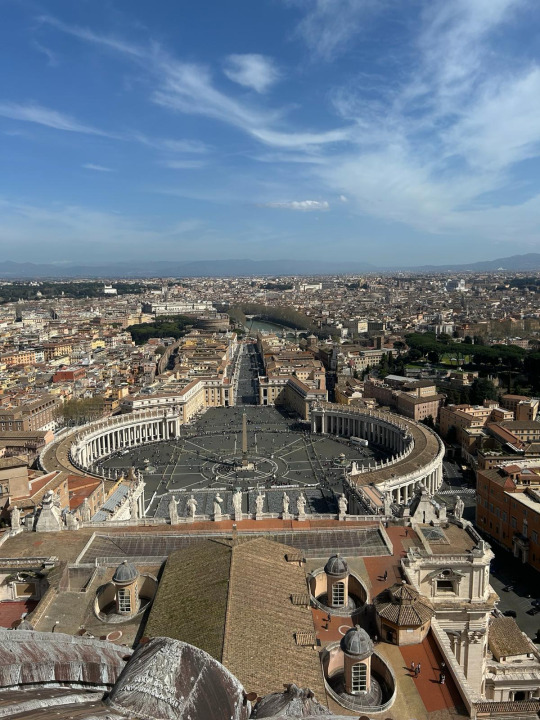
The Colosseum: worth going inside — especially if you have a good imagination. Looking down at the arena floor, I imagined gladiators brutally fighting to the death with bloodthirsty Romans sneering and cheering them on from all sides. That happened right where I was standing. Even a peasant in the nosebleeds would have been close enough to the action and seen the killing in gruesome detail.
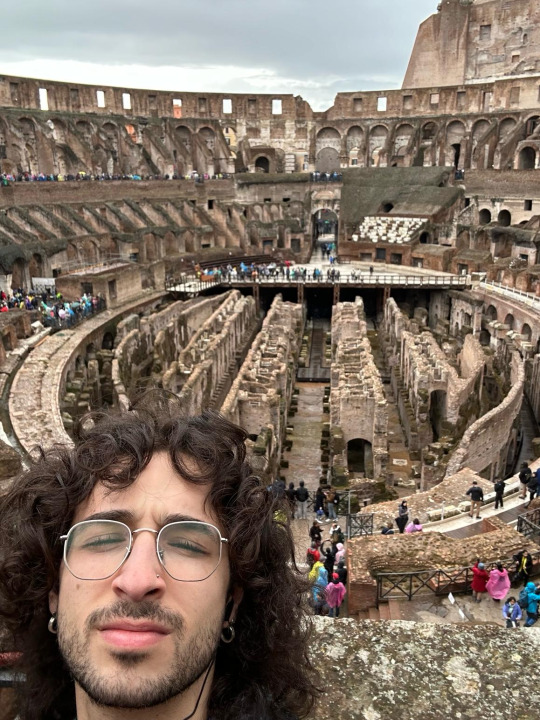
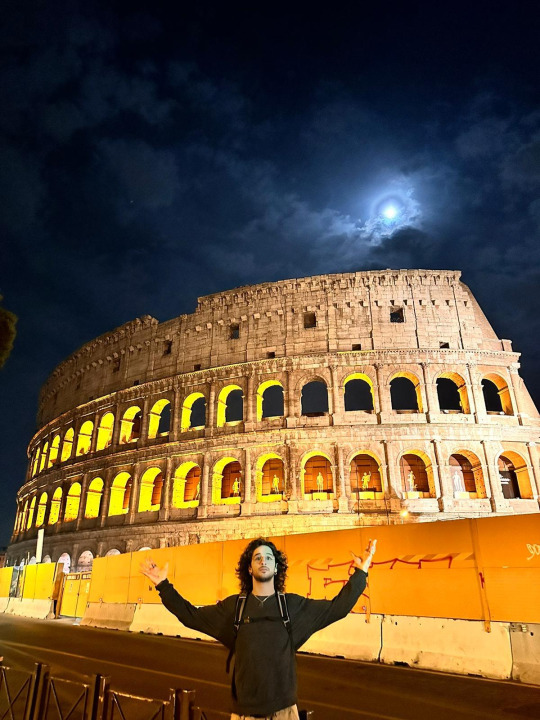
The Roman Forums: also a big imagination thing. Imagining standing in the center of Rome, massive white marble buildings towering above, cheering peasants on all sides, while the Roman emperor parades through the streets with golden chariots filled with riches pillaged from far away lands.


The Borghese Gallery: Probably my favorite thing in Rome. The pictures speak for themselves, some of the most impressive sculptures I’ve ever seen in my life (close tie with the David in Florence).


The Pantheon: It's crazy how old this thing was (like 2000 years), and how good of a condition it's still in. That's what happened when you transform a pagan temple into a church, I guess.
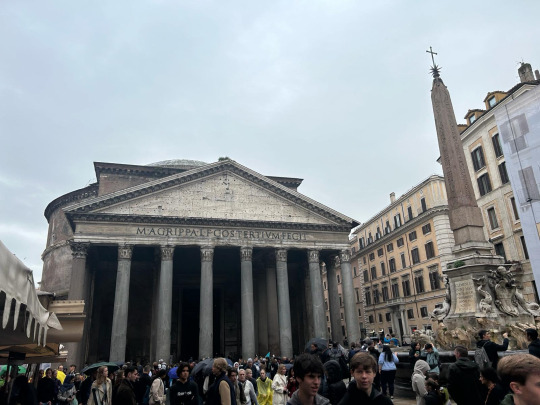

Rome itself: Rome is also filled with beautiful, free to access public Piazzas and monuments that are also worth visiting. There is a distinct vibe to each neighborhood, tons of delicious food, cool sunset spots, and good vibes both day and night.
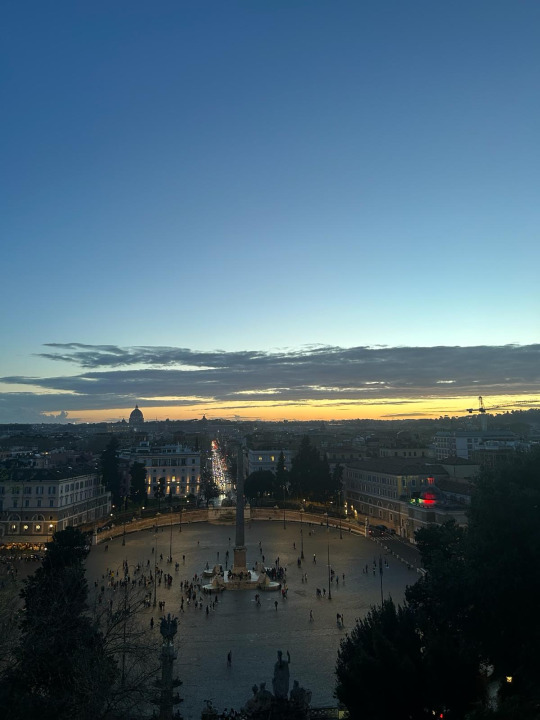


My best recommendation for truly experiencing the epic history throughout the country? RICK STEVES! Rick Steves has audio guides for almost all the biggest tourist attractions in a ton of Italy (and the rest of Europe!) His guides are funny, help you visualize, are super informative, and most importantly, FREE! Using his guides really added to my experience, I listened to them every chance I got. Click here for his Italy guide.
On Tuesday, the friends that I came with left to see other parts of Italy I hadn't planned on visiting, while I took an extra day to explore Rome. I engaged in some Solo-traveling (my first true solo travel of the semester), and my confidence in spending time alone and building connections grew. I stayed in a hostel for two nights and ended up meeting a fellow solo traveler, who happened to be Argentinian. We formed a meaningful connection, and shared mate on Thursday morning — a custom I really missed from my time in Buenos Aires.
Fire-nze 🔥
For those of you who didn’t know (I didn’t before going to Italy) Florence is called Firenze in Italian. Not sure where that distinction came from. But I like it.
I stayed with a home friend of mine, Shea (she stayed with me in Madrid a few weeks ago) who is studying there for the semester. I spent four days in total in Florence, two of which I used to take short day trips to nearby cities.
Florence is the birthplace of the Renaissance. As a result, the museums there are pretty insane. The Uffizi has the most impressive collection of Renaissance paintings, probably in the world, with works from Michelangelo, Leonardo da Vinci, Raffael, and more. The Rick Steves tour is great for this one.
The Accademia is home to Michelangelo’s the David. More about how seeing it made me feel in the reflection section. But it’s epic.


Florence also has a pretty insanely huge church, the Duomo, and the story about how it was designed is also crazy. In conclusion, the Renaissance men are goated. They were literally good at everything, art, sculpting, engineering, architecture, you name it, they could do it. How I’m tryna be for real.

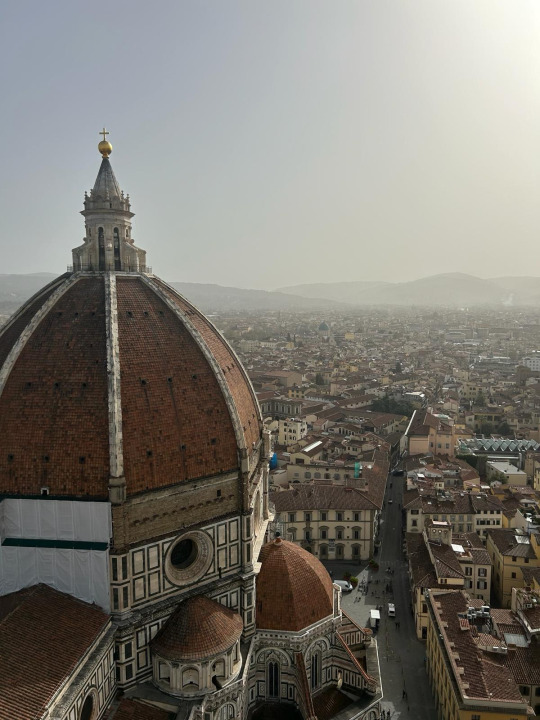


Going ta’ Bologna (I tried to make it rhyme i'm sorry)
My day spent in Bologna was one of my favorites this trip. I took a day trip there alone from Florence, a quick 1 hour train ride. Bologna has an amazing vibe. It smells fantastic everywhere (food markets, soap shops, flowers, etc. Beautiful.). It felt really local. There were a good amount of tourists, but Italians far outnumbered them, which was a different story from Florence and Rome, both of which were pretty overwhelmed (especially true in Easter week).
Bologna is also a University Town, so it was filled with young people and overall had a great energy. I spent the day just exploring, eating (I had the best lasagna of my life. Bologna is known for its food scene and it did not disappoint. Ever heard of spaghetti Bolognese? Yeah.), and did a mini pilgrimage to see a cool monastery on a big hill. Fantastic vibes overall, 100% would recommend seeing.
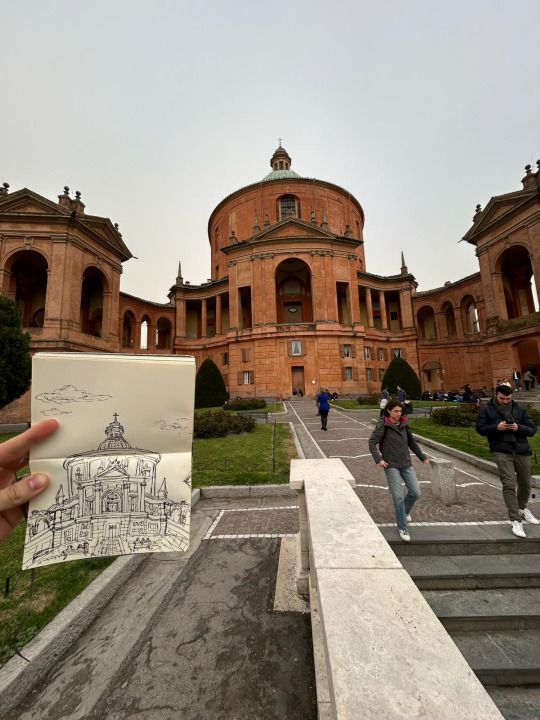


_________________
I would have included more pics, but I was limited by tumblr lol. I’ll discuss the rest of my trip and some big reflections I took away from it in the next post I’ll make soon! If you’re reading this after I’ve already posted all the blogs, you can find the next post here.
Ciao,
Niko Economos
Aerospace Engineering
Universidad Carlos III de Madrid
Madrid, Spain
0 notes
Text
Resources and development-संसाधन और विकास | geography Class 10 chapter-1 | Bihar board 2024
Geography class 10 | Resources and development | Bihar Board 2024 नमस्ते🙏 जय हिंद 🇮🇳 इस भाग में दसवीं के सामाजिक विज्ञान के अंतर्गत आने वाले विषय भूगोल का विश्लेषण करेंगें । इस विषय में कुल 7 अध्याय है जिसे Alok Official के द्वारा परीक्षा से 2 महिना पूर्व पुरा कर दिया जायेगा । संसाधन और विकास का चर्चा हम इस खंड में करेंगे, वैसे तो आपने थोड़ा बहुत आठवीं के भूगोल में पढ़ा ही होगा, उसी का विस्तार…

View On WordPress
0 notes
Text
MCQ Questions for Class 10 Geography Chapter 1 Resource and Development with Answers
#NCERTMCQ#Class10GeographyChapter1#GeographyClass10Chapter1#ResourceandDevelopment#MCQQuestionsforClass10GeographyChapter1ResourceandDevelopment
0 notes
Text
WBBSE Notes For Class 10 Geography And Environment Chapter 1 Exogenetic Processes And Resultant Landforms
0 notes
Link
#extra question answers class 10th ch-1#ncert#ncert solutions#class 10#solved board paper cbse class 10 science#cbse board exam 2020#ncert solutions cbse class 11 geography#cbse#cbse class 10 exam#cbse class 10 board exam#cbse class#ncert science exemplar problems class 10 solutions pdf#ncert solutions for class 10 science chapter 1 intext questions
1 note
·
View note
Link
4 notes
·
View notes
Text
NCERT Solutions For Class 10 Social Science
Class 10 Science NCERT Solutions
The NCERT Solutions for Class 10 Social Science (Hindi Medium) have been solved by a high standard faculty at NCERT-Solutions.com comprising of expert teachers with several years of experience in the field of school education.
The CBSE NCERT Solutions for Class 10 Social Science include step-by-step solutions to various topics related to the Class 10 Social Sciences textbooks.
NCERT Solutions for Class 10 Social Science History: India and The Contemporary World – II (इकाई 1: इतिहास-भारत और समकालीन विश्व-II)
Chapter 1 The Rise of Nationalism in Europe (यूरोप में राष्ट्रवाद का उदय)
Chapter 2 The Nationalist Movement in Indo-China (इंडो-चाइना में राष्ट्रवादी आंदोलन)
Chapter 3 Nationalism in India (भारत में राष्ट्रवाद)
NCERT Solutions for Class 10 Social Science Geography: Contemporary India – II (इकाई 2: भूगोल-समकालीन भारत-II)
Chapter 1 Resource and Development (संसाधन एवं विकास)
Chapter 2 Forest and Wildlife Resources (वन और वन्य जीव संसाधन)
Chapter 3 Water Resources (जल संसाधन)
NCERT Solutions for Class 10 Social Science Civics (Political Science): Democratic Politics – II (इकाई 3: राजनीति विज्ञान-लोकतांत्रिक राजनीति-II)
Chapter 1 Power Sharing (सत्ता की साझेदारी)
Chapter 2 Federalism (संघवाद)
Chapter 3 Democracy and Diversity (लोकतंत्र और विविधता)
NCERT Solutions for Class 10 Social Science Economics: Understanding Economic Development – II (इकाई 4अर्थशास्त्र-आर्थिक विकास की समझ-II)
Chapter 1 Development (विकास)
Chapter 2 Sectors of Indian Economy (भारतीय अर्थव्यवस्था के क्षेत्रक)
Chapter 3 Money and Credit (मुद्रा और साख)
#NCERT Solutions For Class 10 Science#Class 10 Science NCERT Solutions#NCERT Solutions For Class 10 Hindi#Hindi Class 10#NCERT Solutions For Class 10 Social Science#NCERT Solutions For Class 10 Science Chapter 1#NCERT Solutions For Class 10 Social Science History#NCERT Solutions For Class 10 Social Science Economics#NCERT Solutions For Class 10 Science Chapter 2#NCERT Solutions For Class 10 Social Science Civics#NCERT Science Solutions For Class 10#NCERT Solutions For Class 10 Social Science Geography#NCERT Solutions For Class 10 Science Chapter 6
8 notes
·
View notes
Text
WBBSE Solutions For Class 10 Geography And Environment Chapter 1 Exogenetic Processes And Resultant Land Forms
0 notes
Text
Importance of NCERT books for UPSC
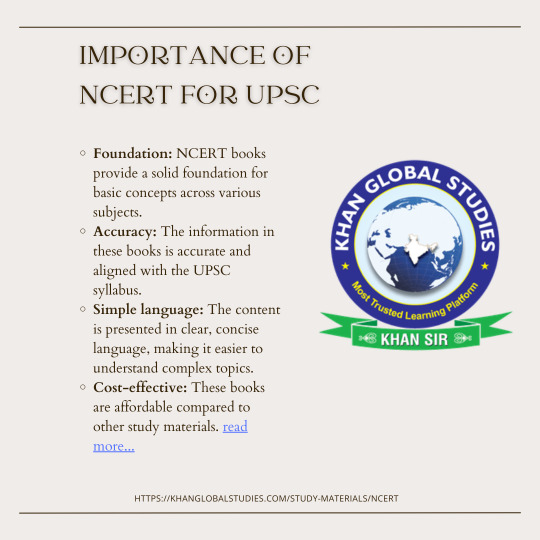
1. Importance of NCERT books for UPSC:
Foundation: NCERT books provide a solid foundation for basic concepts across various subjects.
Accuracy: The information in these books is accurate and aligned with the UPSC syllabus.
Simple language: The content is presented in clear, concise language, making it easier to understand complex topics.
Cost-effective: These books are affordable compared to other study materials.
2. Recommended NCERT books for UPSC:
History: Class 6 to 12 NCERT History books
Geography: Class 6 to 12 NCERT Geography books
Polity: Class 9 to 12 NCERT Political Science books
Economics: Class 9 to 12 NCERT Economics books
Science: Class 6 to 10 NCERT Science books
3. How to use NCERT books for UPSC preparation:
Read thoroughly: Go through the books multiple times to grasp the concepts well.
Make notes: Create concise notes while reading to aid revision.
Practice questions: Solve the questions given at the end of each chapter.
Connect topics: Try to establish connections between different subjects and topics.
Use as a base: Build upon the NCERT knowledge with more advanced study materials.
4. Additional tips:
Focus on NCERT books of classes 6 to 12 for a comprehensive understanding.
Pay special attention to maps, diagrams, and tables in these books.
Use NCERT books in conjunction with the UPSC syllabus to ensure complete coverage.
#books#khansir#importanceofncert#upscstudymaterials#recommendedbooksforupsc#freencertpdf#allclassesbooks#History#polity#geography#science#economics#upscpreparationtips
1 note
·
View note